Episode #01
Storyboard・Direction
Hirotaka Mori
Battle Scene Storyboard
Tetsuya Takeuchi
Animation Direction
Yuko Yoshida, Ryota Furukawa, Ai Watanabe
Even with a messy launch thanks to Disney+ holding Tengoku Daimakyou‘s streaming rights hostage in some countries but not others, the premiere managed to generate a sizable buzz, at least more than you might expect from source material that isn’t all that well known. Excluded from that subset are animation fans, who would have been largely clued in from as early as the initial staff announcement, since the team assembled here is of a rare pedigree. That alone does not guarantee success, though. As always, seeing is believing, and fortunately, from what we’ve seen of Tengoku Daimakyou, there is a lot to believe in.
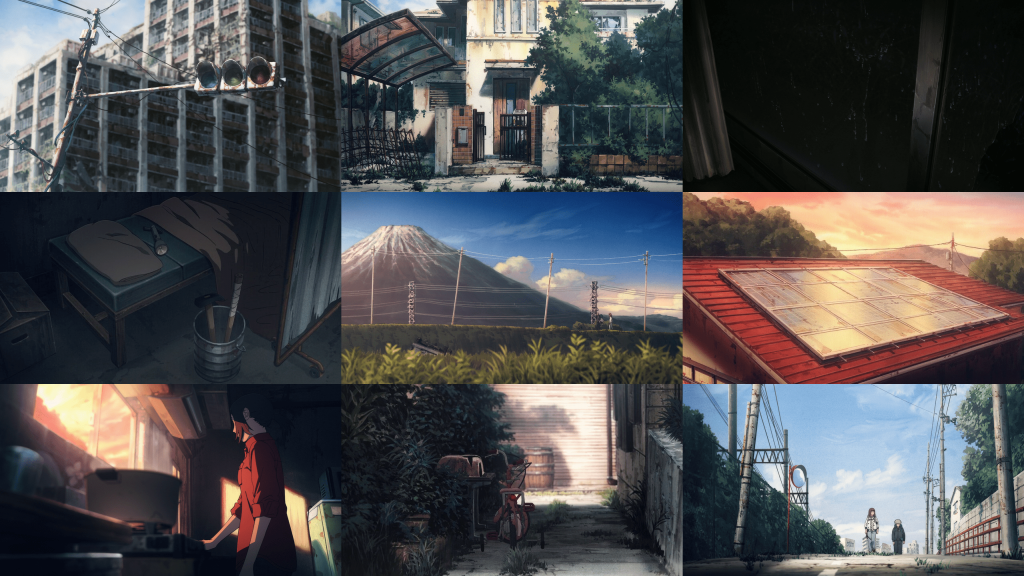
Among the many things the first episode does well – some of which I’ve already touched on in the staff overview – the pacing is one of the easiest achievements to overlook. Adapting three to four chapters of fairly dense material is on the more challenging side, especially when there are notable additions and omissions made throughout. Hirotaka Mori’s direction was upbeat—it had to be to cover as much as it did—but it crucially, and only just narrowly, avoided overstepping its purpose. A constant challenge throughout this adaptation is going to be finding the balance between the need to keep the story moving and allowing the time for contemplation post-apocalyptic narratives rely on to establish atmosphere. As we’ll see with the next episode, it won’t always balance itself so gracefully, but nonetheless, the declaration the first episode makes to use the manga only as a guide rather than an infallible scripture is much appreciated, both for my prospect of covering it at length and for the quality of the anime itself. Furthermore, not only does the staff have the blessing of mangaka Masakazu Ishiguro to do as they please, but he has gone so far as to humbly suggest that the adaptation has already surpassed him in its ingenuity. That didn’t take long! In fairness, there are certain things animation as a medium is just better at doing, and transitioning between locations is one of them. To that end, the anime made great use of the first chapter of the manga, a chapter entirely located in the futuristic school setting. By splicing it into three distinct parts, the adaptation fancifully transitions them throughout Maru and Kiruko’s side of the story. This rearrangement of events serves to shift the focus of the story more heavily towards the outside world, at least for the first episode, which is a more than sensible change to make when the goal is in part to hook viewers.
For as much story content as it was able to cover in one episode, time was still spared for highly involved, original action. Tetsuya Takeuchi has maintained a connection with Production I.G. since starting out as an animator at their Niigata branch almost thirty years ago. The majority of his work at the studio has been under producer Rui Kuroki instead, but as mentioned in the staff preview, Tengoku Daimakyou is such an odd mix of personal friendships and professional admiration that the usual sakuga nerd Fantasy Football about which producers have whose numbers in their phone contacts is void, and all bets are off. Tengoku Daimakyou has established a gravitational field of its own, and at its center is director Hirotaka Mori. Mori would have encountered the legendary veteran during his time as an assistant director for Sword Art Online Movie: Ordinal Scale (2017), where Takeuchi was appointed action animation director. A few years later, on 22/7 (2020), Mori’s stunning seventh episode (I watched it out of context recently and was impressed) saw Takeuchi lend a hand as a karaoke scene supervisor. All this to say, beyond Takeuchi’s ties to I.G., he is well acquainted with the series director’s temperament and manner of working, which precipitates this sort of specialized supporting role on the show. In the first episode, he constructed the highly involved choreography during Maru and Kiruko’s bandit encounter, although Takeuchi didn’t actually animate the most demanding part of the scene, instead leaving that up to his protegee, Ryo Araki, who animates with such a similar style that it would be fair to get them mixed up.
Continuing on the drawing side of things, little has been made of the character designs thus far, perhaps owing to the lack of prestige carried by the name of the designer, Utsushita. That lack of name recognition shouldn’t be mistaken for a lack of skill, though, as they’ve worked predominantly outside the TV and anime film space, producing quality work under the studio name Minataka Laboratories for over a decade. This small group got their big break in 2018 when they were entrusted with the commemorative manga PV of Tengoku Daimakyou, their only credited commercial work.
Utsushita’s animation is leagues beyond what you might expect out of an “indie” studio, and moreover, out of a simple teaser for a niche manga – so much so that it invites suspicion over how something so strong could come to be with hardly any track record to speak of. Minataka Laboratory’s low to nearly nonexistent profile does no favors on this front, but the remarkable solidity of the animation alone suggests they may have received some formal industry training before going independent all those years ago. In any event, one has to wonder if it was due to the remarkable quality of this PV that the production opted to keep Utsushita on as the sole character designer, where most in the same position would have enlisted someone with more experience (suggesting again that Utsushita may have proper experience). Aside from keeping them on as the character designer, the ending sequence found in the second episode is also credited to Minataka Laboratory. It’s a well-constructed trip through many of the stories’ locations and themes, but not so revolutionary that it warrants it’s own section, mentioning it here will suffice. Ultimately, though, caveats like these are just yet another wrinkle in the fascinating exception to everything Tengoku Daimakyou turned out to be.
Thus far, Utsushita’s adapted designs have been underlined by a really strong sense of flexibility in the final product. On a scene-to-scene basis, the characters are rarely drawn with the exact same approach, yet they consistently possess a great deal of emotive power. One of the primary reasons for this is the absence of an appointed chief animation director on the project. The chief animation director is responsible for correcting the corrections made by the animation directors, enforcing a higher level of consistency across the drawings. To be without one in the current year is extremely rare, as the role has become so omnipresent that it isn’t uncommon to have several on the same episode, effectively defeating the point of the whole “chief” aspect – a topic for another day. In any event, as it relates to Tengoku Daimakyou, the team has intentionally pursued a lack of enforcement of strict models, which means the series is poised to feature a lot of unique scene-to-scene character art.
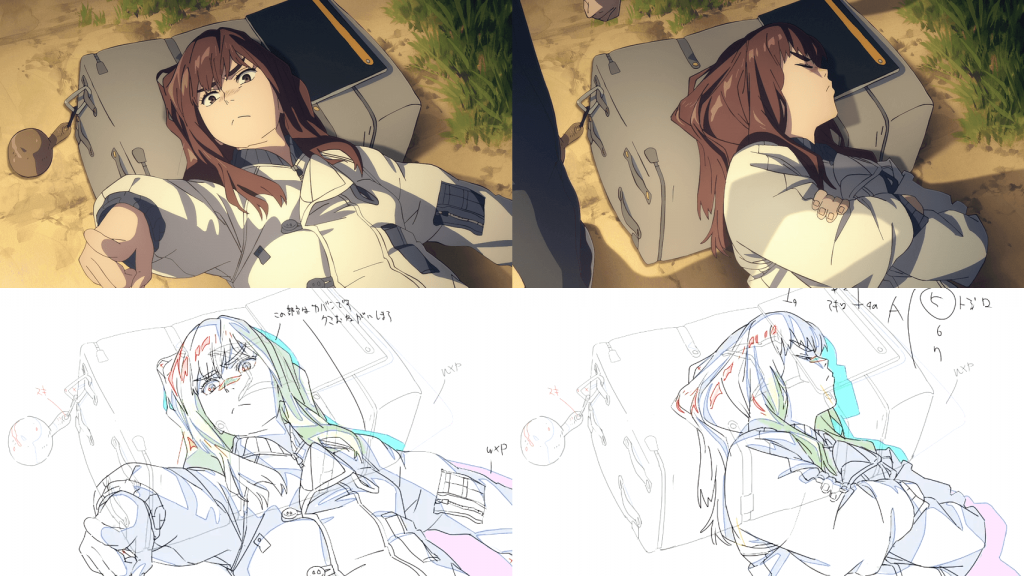
The rationale for the apparent lack of conformity can also be traced back to the source: Masakazu Ishiguro’s manga. Ishiguro’s art has an inherently lax ease to it. His characters are adorned with simple features and forgiving proportions; they’re cute but far from attractive. So it makes sense that the anime doesn’t feel any pressure to replicate something that isn’t there to begin with.
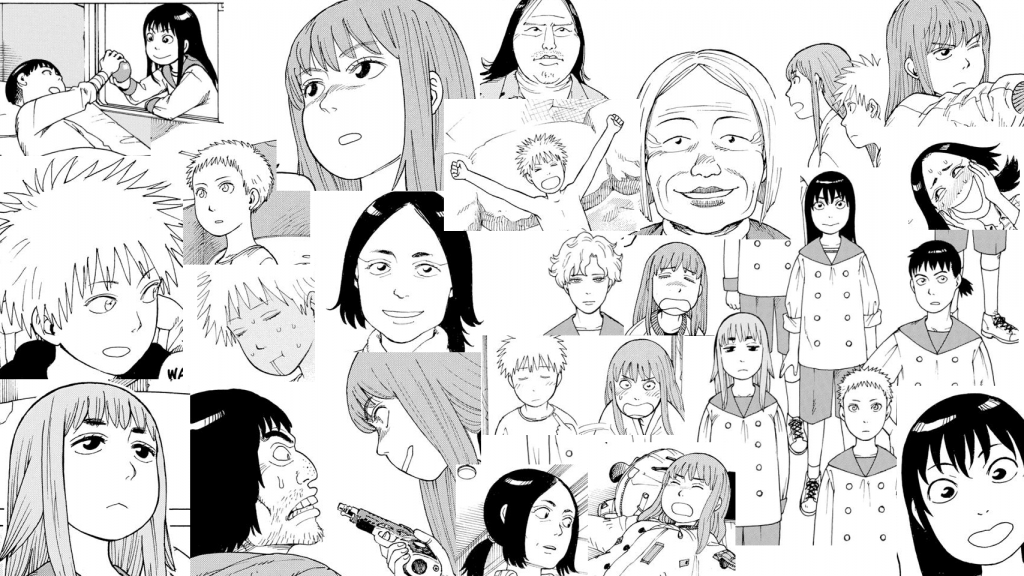
While you would struggle to compare the two otherwise, this emphasis on animator individuality is one of the things Tengoku Daimakyou shares with Fate/Go: Camelot, making it an unlikely spiritual successor thanks to it inheriting much of the staff that made Fate/Go: Camelot an ode to animation idiosyncrasy, as kViN so aptly dubbed it. There is a larger discussion that could be had here centered on why having so many different takes across a series is a good thing since there is a tendency to take this for granted, especially among the animation-enthused. Encouraging animator individuality is great and all, but on the flip side, it’s just as easy to argue the opposite: there are times where draconian supervision and strict adherence to agreed-upon models have thematically better results, and for what it’s worth, the top grossing box office charts would tend to agree. Thus, it should be investigated on a case-by-case basis, and in the case of Tengoku Daimakyou, the series is perfectly suited for this approach. Maru and Kiruko are 15 and 18, respectively, or 20; Kiruko is self-professedly “bad with numbers.” Either way, for a multitude of reasons, they’re effectively both still children. Opening up the designs to interpretations captures some of the spontaneity we would expect from young protagonists and, moreover, from this innocence-stealing world they’re inhabiting. To take a realistic approach to the animation would have been a mistake. No aspect of the show demonstrates this better than its opening sequence. Though, thanks to its exclusion from the premiere, we have to first turn to the second episode in order to talk about it…
OPENING
Storyboard・Direction・Animation Direction
Weilin Zhang
Key Animation
Weilin Zhang
Masami Mori, Curie Lu, Kay Yu, Genki Uchiyama, Shingo Yamashita, Moaang, Nikochan, Ren Onodera, Kouki Fujimoto, Hakuyu Go
VFX
Ren Onodera
Photography
Weilin Zhang
Every time I sat down to record something even moderately intelligent about this opening, I would begin by re-watching it, find myself at a loss for words, then get sidetracked and start on something else instead. It feels almost unfair to attempt to put into words the merits of a piece that so obviously speaks for itself. To pick apart individual aspects frame-by-frame when it’s the way they all come together that makes it so special. An opening with as much care poured into the craft as this deserves at least an attempt, though. So here goes nothing.
If we are to start anywhere with Weilin Zhang’s directorial debut, it should be with Shingo Yamashita instead. As the webgen artist with the widest reach, the influence this single man has had on an entire generation of creatives cannot be overstated. A pioneer of digital animation, his mindset and methods are inseparable from many of modern anime’s most extraordinary pieces—both because his own creations are included in that group and also because he left such an influential mark on shows that animation fans naturally gravitate towards, such as Tetsuwan Birdy Decode, NARUTO, and Yozakura Quartet. Even before he stopped animating regularly, his direction had a highly unique and refreshing voice all its own thanks to his propensity for controlling every aspect of the work.
As he burst into the mainstream, his direction traded a lot of the indie, personal flair for something much more refined, yet no less influential. The sophisticated aesthetic sense of Studio Colorido is rooted in his early work, while the short-lived, overlapping cuts that are a staple of his opening sequences have in short order become adopted en masse around the industry, though most struggle to match his sense of harmony with the music. Yamashita’s transformative ways even extend to pre-existing, widespread techniques such as the color trace (irotore, 色トレー). Irotore is just jargon for coloring designated outlines in a color that isn’t black. Some productions have this idea baked into their aesthetic. It’s also often done to accommodate a light source, so that it may appear as if there is no outline at all. The outline is still there though, it’s just colored to match or complement the part it finds itself attached to. Yamashita’s iconic ending sequences, like the ones he did for Shinsekai Yori or NARUTO’s twentieth, surround the entire character in irotore, giving a silhouette feeling to the work. Since he so often has an all-encompassing hand in both the compositing and coloring sides of the production, almost nobody has used this technique to greater effect than Shingo Yamashita.
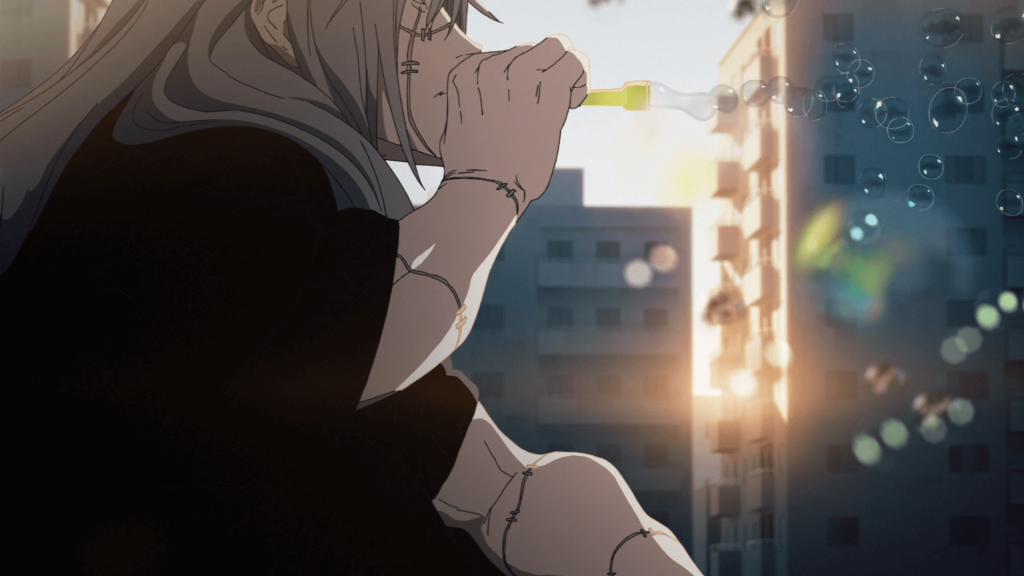

All this to say, Weilin Zhang is very aware of Shingo Yamashita’s legacy; he was from even before becoming a regularly occurring member of his team. More than just being conscious, this opening proves that Weilin has an intimate understanding of Yamashita’s creative mindset, which wouldn’t mean as much if he didn’t also possess the multi-faceted skills necessary to channel it into his own marvelous creations.
At the forefront of this agreement is the seamless integration of digital tools and processes. Nearly every cut is touched in some way, whether subtle or all-engrossing, by the CGI.

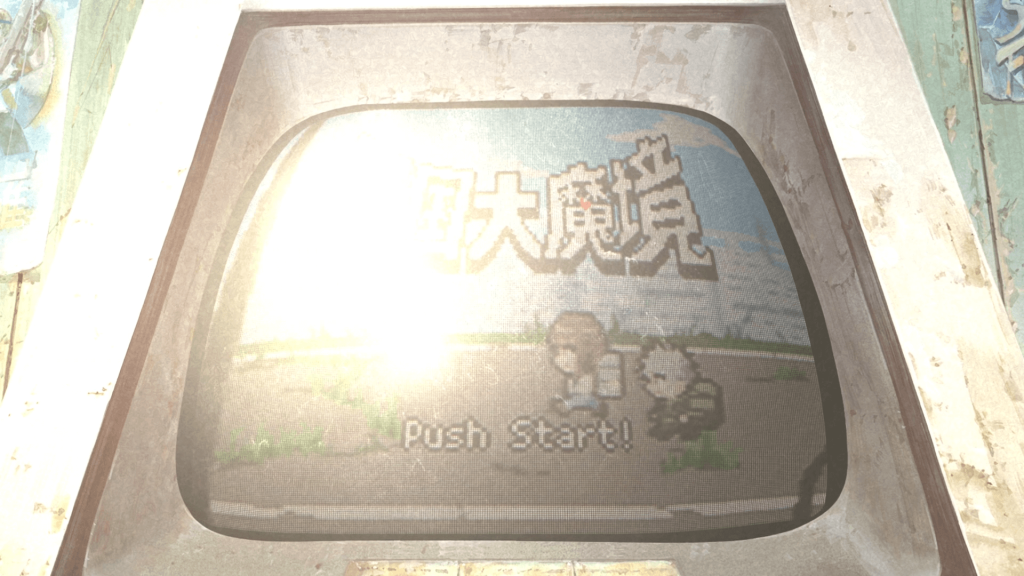
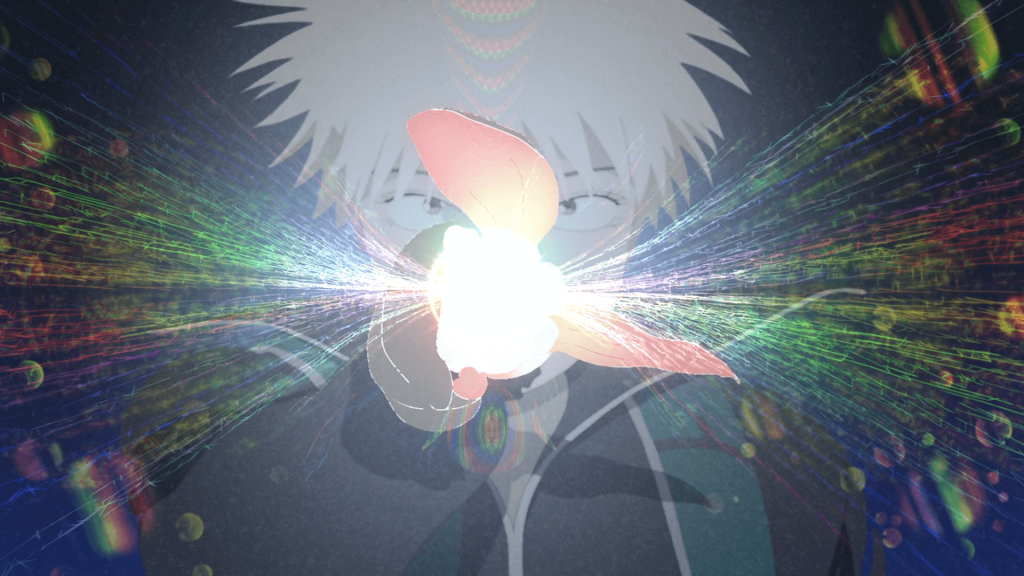
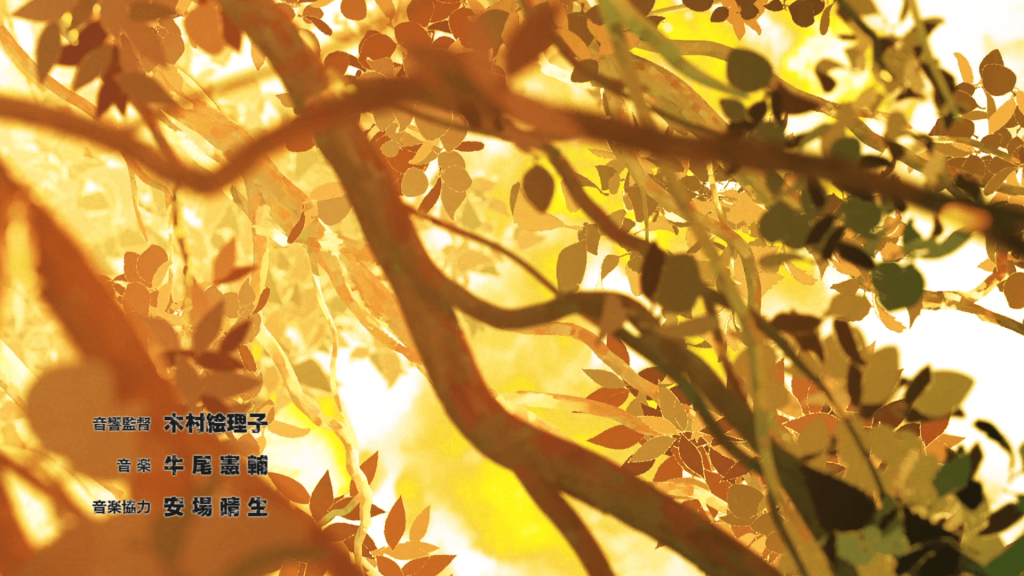
A common theme strung throughout the opening is loose threads. Whether it be the spider web blowing in the breeze at the start, the overhead powerlines, Kiruko’s hair, or even the fascinating diffraction effect seen in the third image above, these wispy elements are creatively integrated and held remarkably consistent. As the song builds to the chorus, the threads from Maru’s touch ability converge on each other, morphing into an elaborate tree adorned with bronze leaves made possible only with the help of Ren Onodera’s VFX expertise.
As if to represent a hyper-distilled version of the production’s overall philosophy, there is not a single on-model drawing in the opening, and moreover, not a single consistent take between animator parts. Maru and Kiruko assume gelatin-like properties reminiscent of Shingo Yamashita’s infamous Pain action, sloshing and bouncing their way through a world purified by the azure sky and bleached stone.
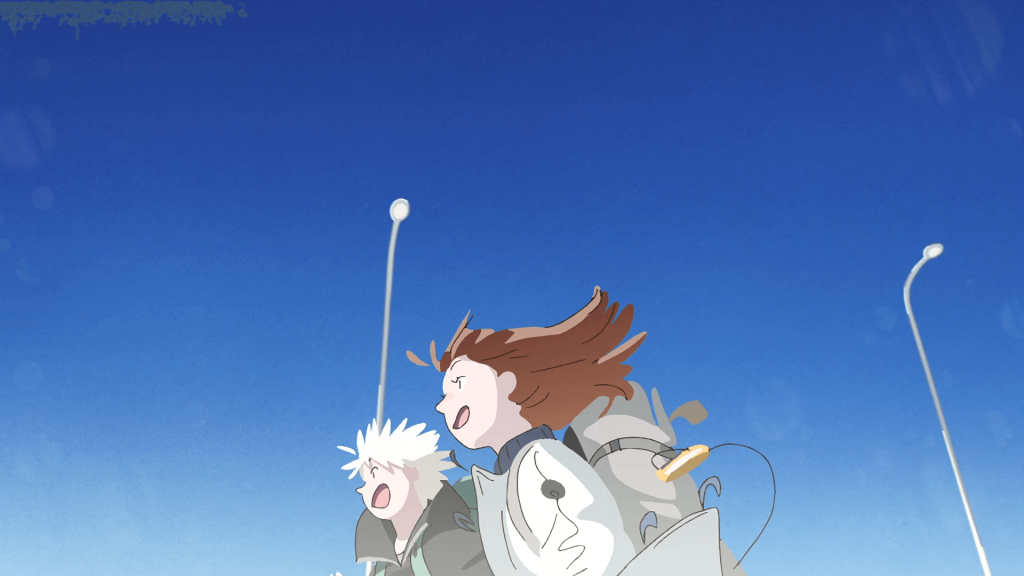



The tone changes dramatically upon arriving at the chorus. What was previously a happy-go-lucky jog turns serious, with the skies exchanging their cleanliness for a muddied haze. For as much as the opening is an ode to Shingo Yamashita, Zhang rejects the typical action chorus, opting instead for a twenty-second-long single cut of Kiruko racing against their own body. This subversive effort gives the opening a memorable flair of its own while also speaking metaphorically towards one of the most significant narrative points of Ishiguro’s manga, as the developments at the end of the second episode should make clear.
Lost in the whirlwind of discussion surrounding this opening is that it was directed from outside of Japan. Anime production has been an increasingly global affair for a while now, and as much as I would like to frame it in a positive way, this change has mostly stemmed from shortages and severe inadequacies within the industry. Fortunately, though, that isn’t the case here. Zhang received the rare opportunity to direct an opening from overseas because, besides the several years worth of inspired key animation, he gained the team’s trust over the course of his time on Fate/Go: Camelot – in fact, the production assistant who facilitated the back and forth is even the same: Masahiro Takahashi. While familiarity with the team surely aids in the process, it still would have required extra steps to keep the many different departments on the same page, which is why direction is usually done in person. That it wasn’t is even more commendable considering the remarkable final product, and hopefully a sign of many great things to come.
Episode #02
Storyboard
Itsuki Tsuchigami
Direction
Kai Shibata
Animation Direction
Toru Iwazawa, Hiroyuki Okuno, Yuki Yoshida, Itsuki Tsuchigami, Mayu Gushiken, Kai Shibata
The brisk pace that underlined the first episode is just as prevalent in the second, if not more so, suggesting that this is indeed the approach the show is content to take. On one hand, it’s fair to come away feeling a bit concerned, considering so much of the series’ strength is in the twisted foreshadowing, an element that doesn’t work as well when the seeds you plant are unearthed shortly thereafter. That is also to say nothing of the world-building and character moments between the action, which are both strong suits of the series. On the other hand, though, a slower approach would make it significantly harder to retain the high-profile staff for an inevitable second, or even third season—assuming it even gets one. This tradeoff has become common as producers and artists alike are reluctant to lock themselves into commitments that span several years, especially when the commitment is as costly as Tengoku Daimakyou.
Following the theme of inexperienced creators, the second episode was directed by Kai Shibata, his first time undertaking such a role. Shibata received formal animation training as a douga artist at Brain’s Base, which is a typical start for most people. However, his career took a sudden turn when he went freelance in 2015 and was suddenly surrounded by some of Doga Kobo’s greatest golden age talents. Ultimately, this says more about the scouting ability of Shouta Umehara, the production assistant who gave Shibata the opportunity to debut as a key animator on the seventh episode of Plastic Memories, though it reinforces the general idea that it did not take Shibata long to develop a strong sakuga-sense. As you might expect, Hirotaka Mori is inseparable from Shibata’s growth as an artist, encountering each other several times on A1 Pictures productions. Mori’s ninth episode of Fate/Apocrypha is again more relevant than anyone could have expected at the time it aired. As I mentioned in the staff overview post, the connections formed through this episode ignited much of the passionate youth supporting Tengoku Daimakyou today.
On the topic of connections, you could have bet the farm on Toru Iwazawa being present for Kai Shibata’s debut, and sure enough, he was. This duo has made a recurring habit of freelancing on the same anime; it’s almost like there is an unwritten clause in their contracts: if you hire one, the other must be brought on board as well. The list of shows overlapping on their respective resumes is lengthy to the point where it’s worth writing out strictly for comedic effect: WWW.WORKING!!, My Hero Academia S1, Little Witch Academia, ACCA13, KonoSuba S2, Fate/Apocrypha, The Seven Deadly Sins, B: The Beginning, Black Clover, JoJo’s Bizarre Adventure: Part 5, Fate/Go + a million different game PVs, CMs, and spin-offs, Fate/Stay Night: Heaven’s Feel 2, Sword Art Online: War of the Underworld, Azur Lane, Fire Force S2, Jujutsu Kaisen, Sonny Boy, Princess Connect S2, Lycoris Recoil, Chainsaw Man, and now… Tengoku Daimakyou. What are friends for if not to assume a whopping 40 cuts of layout and a significant amount of animation direction on your debut work?
With that said, history won’t remember this one as a proper Kai Shibata-episode due to the involvement of fellow Takahiro Kishida fanatic, Itsuki “miso” Tsuchigami. In addition to storyboarding the episode, miso supervised a few cuts in the second half, and even took one of the most challenging cuts in the Hiruko fight for himself. After all, if you’re going to ask the Lovecraftian fiend to move that much, you might as well not burden someone else with it.
All of this was unplanned. Miso was originally only supposed to board the episode, however, even just that alone makes it difficult to speak about which ideas were a product of his board, and which Shibata devised himself, since we don’t have any other direction of his to reference. For what it’s worth, miso seemed to downplay his work and the strength of the episode overall (as creative types are wont to do), but more than likely we’re dealing with a mix of both their ideas coming together. One such device we can credit to Tsuchigami (I outright just asked him) is the cinescope aspect ratio. At the cost of projecting, its inclusion here perhaps stems from jaded feelings towards its growing misuse across theatrical works that aren’t all that theatrical. Regardless, its placement is highly selective: a couple cuts in the pitch black, and as Maru engages the Hiruko. For as much as the narrow aspect ratio contributes to the tense atmosphere in the former scenario, it’s the combination with a lack of any ambient light source that really elevates the scene.
A screen this dark is rare for anime. Even at its most extreme, there will still generally be an attempt to fabricate light sources and play with the color scripts even if they don’t make realistic sense. Tsuchigami got the ball rolling for this idea by visiting the far west end of Tokyo at night (he didn’t go alone, as that would be too scary), and Kai Shibata then agreed to pursue this angle, even going so far as to tell the staff he wanted to challenge the limits of darkness in TV anime. Fortunately, he had Kentaro Waki at his disposal, who did an arguably even stronger job at this on Gundam Hathaway Flash. Tengoku Daimakyou succeeds much in the same way Hathaway does, not because the screen is dark but because of the extreme contrast between the black of night and the intermittent artificial light sources. The manga features neither flashlights nor car explosions so these original elements were devised by the staff and brilliantly integrated.
As an aside, the entire hunted in the dark sequence reminded me of the nineteenth episode of Shinsekai Yori, which not only had a very similar scenario, but also had photography by Asahi Productions, the studio Kenatro Waki was stationed at at the time. While this was not one of the episodes of the show he worked on, it does present an interesting contrasting point since they opted to keep the scene largely visible.
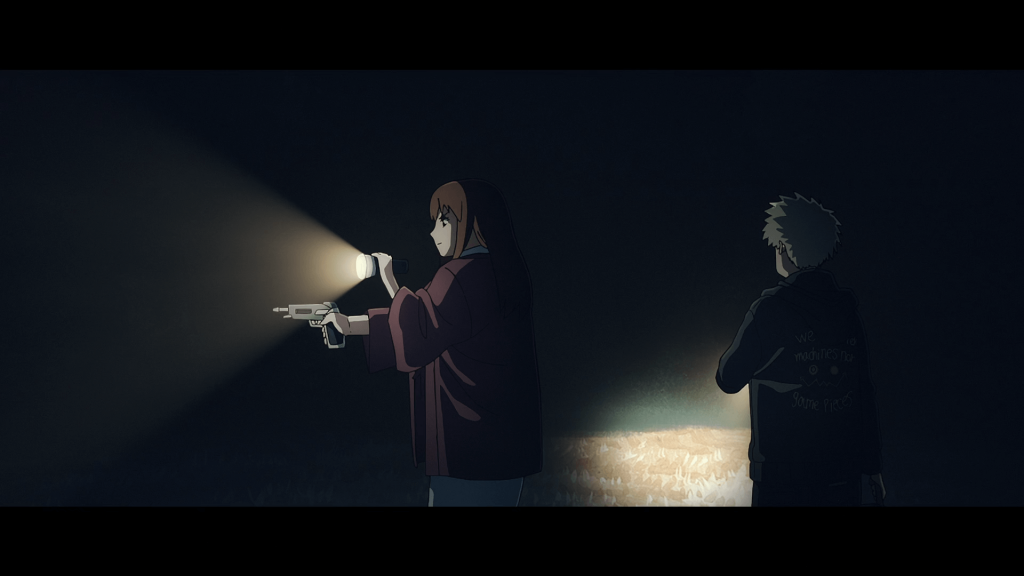
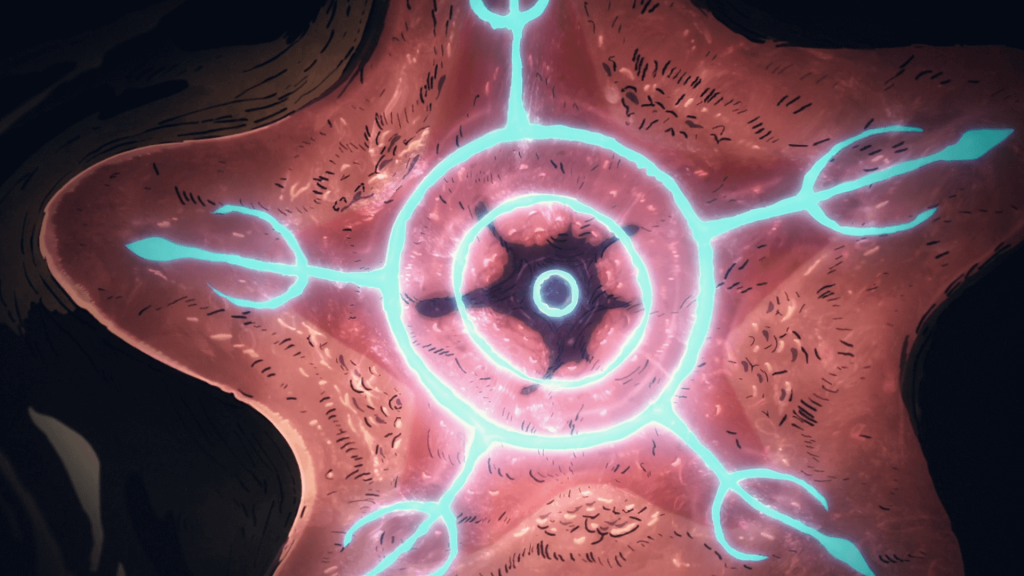
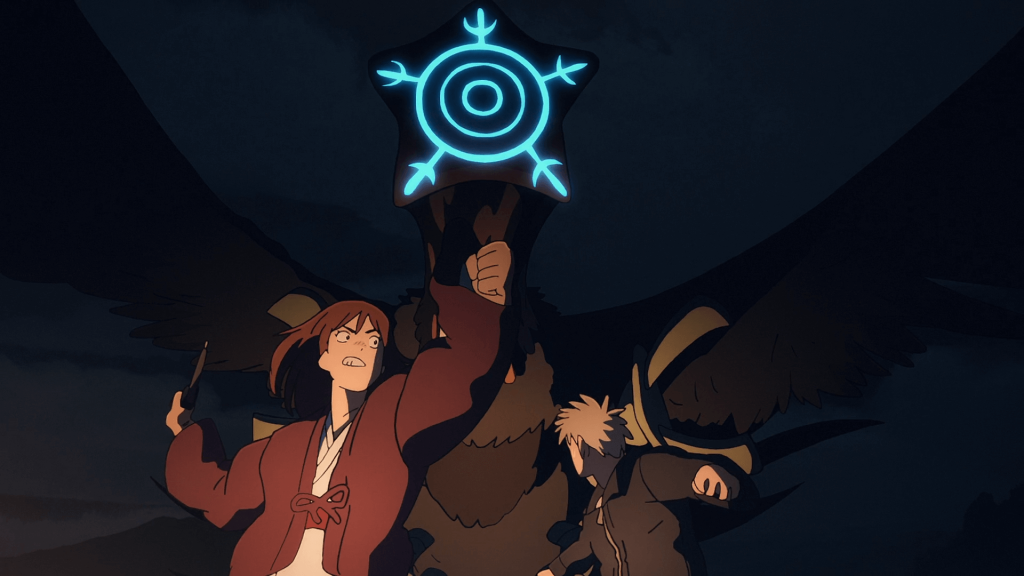
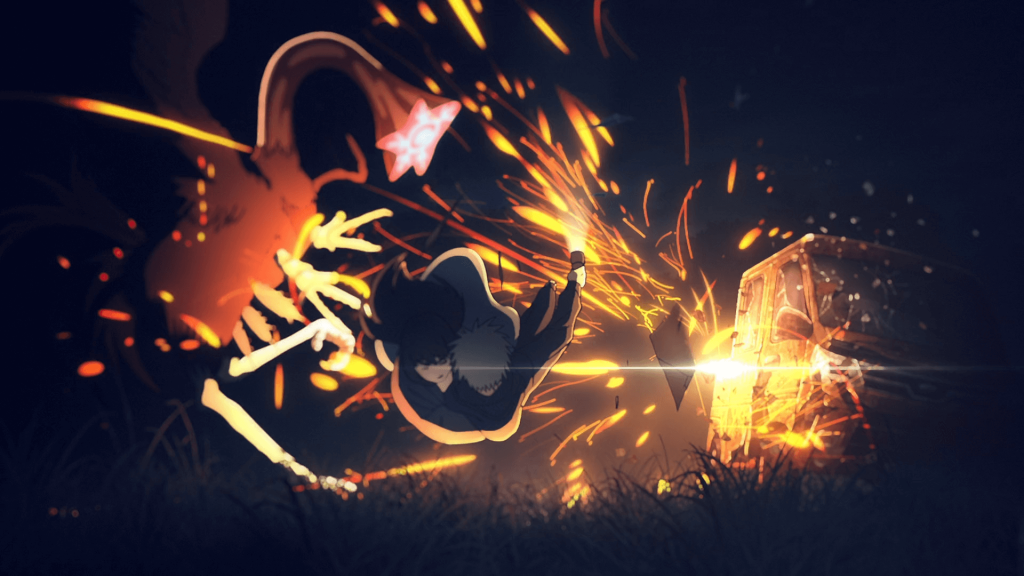
Tsuchigami’s advanced involvement in a show with as liberal an approach to animation drawings as Tengoku Daimakyou is fitting considering he’s recently been critical of works that present objectively solid but largely uninterpretable animation. That this describes the majority of Production I.G.’s catalogue further adds an interesting dynamic to the situation. As I alluded to earlier, there cannot be a single correct approach, but rather it depends entirely on the material and the director behind it. Tsuchigami himself is aware of this, citing Satoshi Kon’s works and Princess Mononoke as examples of unwavering precision in the drawings that are still interesting thanks to the way they’re supported by the larger surrounding work. For the rest of his thoughts on the matter and more, feel free to subscribe to his pixivfanbox.
When revisiting the manga to compare any changes, I was surprised to find the second half of the episode is more or less adapted as-is, which is to say, both versions set a torrid pace. It’s our first look at this world’s post-collapse societies, so it would have been nice to give it more than a cursory glance; the fact that the manga doesn’t either makes it difficult to fault. Where the anime could have strengthened this part is with a more careful handling of the dialogue timing and spacing. It’s very much a widespread problem across anime, but there’s little attention paid to conversation cadence or natural pauses, instead feeling closer to actors rehearsing their lines in sequential order. This is most apparent in Maru’s confession and Kiruko’s subsequent disclosure on the boat—an incredibly awkward moment that could have benefited from honing in on the intervals between lines. In its current state, it certainly gets the job done and, moreover, mercifully spares the audience from outright dying of second-hand embarrassment, but it would be fair to say there was room to approach this scene in a less straight-ahead way.
As we will soon see, Kiruko’s gender reveal has major implications for the story going forward and also closes the book on a number of foreshadowing points placed throughout the first episode. Just like that, what seemed like playful banter with the bandits was an honest confession, while the scene in the inn bathroom suddenly makes more sense than it did previously. Having now read significantly further ahead in the manga, the way Masakazu Ishiguro handles these sensitive subjects is not graceful, to say the least. Tengoku Daimakyou is very much an unhinged exploration of sexuality and desire that will always leave the reader with increasingly more questions as the story progresses—most of which would probably be better left unanswered. It’s a work that is messy but fascinating in its messiness, while also being too smart for its own good with how the number of carefully crafted layers makes it feel almost written in reverse. Tragically, most of the payoff is set for after the first season, and as mentioned in the introduction, it’s far from guaranteed that this once-in-a-decade adaptation will continue beyond that, and especially not with one-hundred percent staff retention. The most we can do at this time is appreciate the foundation it is currently setting and have hope. For the sickos of the world, the most we can do is hope.
If you enjoyed this post, please consider supporting on ko-fi: here
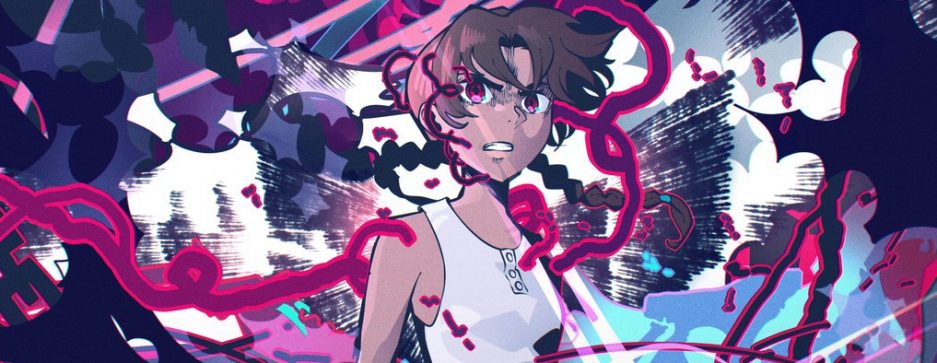
After a long time, it’s refreshing to finally have an intriguing post-apocalyptic anime on our hands. It’s great to see this genre revitalized with such a promising series.